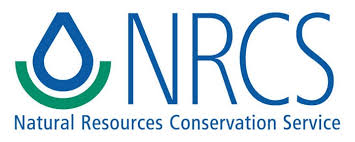U.S. Department of Agriculture’s Natural Resources Conservation Service (NRCS) provides tips and suggestions on pasture and grazing management for drought effected livestock producers.
The drought of 2017 has adversely impacted many producers across the state. Unfortunately, the effects may linger well into next year even if precipitation returns to “normal” (e.g. impacting forage production, weed pressure, plant density, plant composition, etc.), the good news is there are things that can be done this fall to help reduce the drought’s effect.
Feeding Management
There is a lot of hay being imported to the state from the surrounding region due to the shortage of hay production across the state. Producers from across the region have graciously donated hay, some even being trucked in from as far away as Michigan. The efforts to get hay into North Dakota has been tremendous, however it must be dealt with caution. While feeding bales this winter, please be cognizant of what is in the hay. For those bales that are contaminated with weeds or of unknown plants it is best fed in an area that can be monitored and managed if unwanted weeds begin to appear. Logical areas to feed these types of bales can be a traditional lot or cropland.
Grazing Management
Review your grazing management strategy and pasture or range conditions going into fall, and make those necessary adjustments to season of use, stocking levels, and grazing schedule as needed. Avoid over utilizing pastures and keep as much residual stubble as possible going into winter. If your grazing program is in need of some assistance do not hesitate to visit your local NRCS field office to inquire about technical and financial assistance for improvement to your grazing resources. Is your current livestock water situation going to get you through the next drought? Can your grazing system be improved with added fence and additional management adjustments?
Fall Forage Opportunities
One thing producers can do right now is to monitor moisture levels of cropland and begin to decide whether or not a cover crop is right for you. If there is sufficient moisture for a cover crop, consider planting a winter annual/cool season mix such as winter rye, winter wheat, oats, barley, cereal rye, brassicas, etc. Planting by August 15th is recommended to allow sufficient growth, however production levels will be dependent on moisture availability. Allow for some cover crop residue to reduce erosion and feed the soil microbes.
Although recent rains may have greened up drought stricken pastures, keep in mind most native grasses are most likely using the recent moisture to expand or replenish root systems. Forgo the urge to regraze areas that have been dormant and previously grazed, doing so may further reduce grass root reserves making the effect of the drought last longer than it normally would.
Considering feeding and grazing management while also looking for fall forage opportunities may give a better position moving into fall and the next growing season.
Please contact your local USDA service center for additional information.
Source: NRCS




